- Clayton High School
- Self-Assessment
- Standard 3
Clayton High School AdvancEd External Review
Page Navigation
-
Teaching and Assessing for LearningThe school's curriculum, instructional design, and assessment practices guide and ensure teacher effectiveness and student learning.Overall Rating: 3.08
 Evidence:
Evidence: Evidence:
Evidence: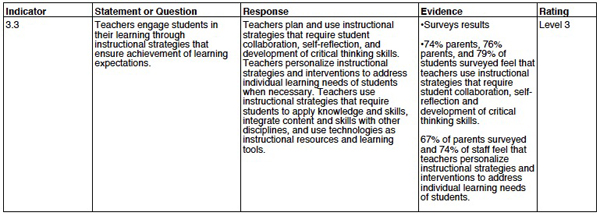 Evidence:
Evidence: Evidence:
Evidence: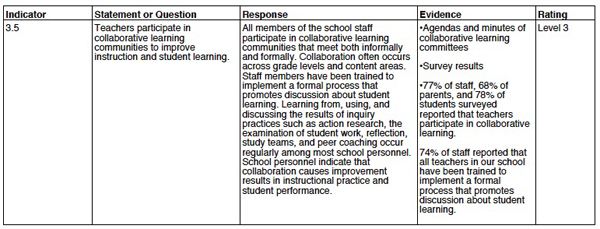 Evidence:
Evidence: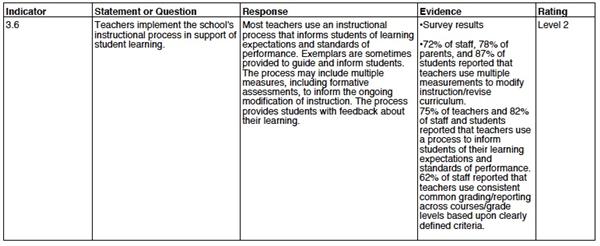 Evidence:Evidence:
Evidence:Evidence: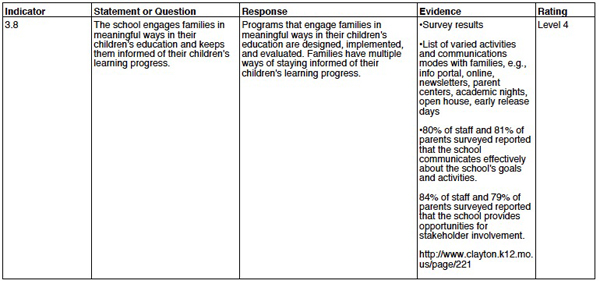 Evidence:
Evidence:

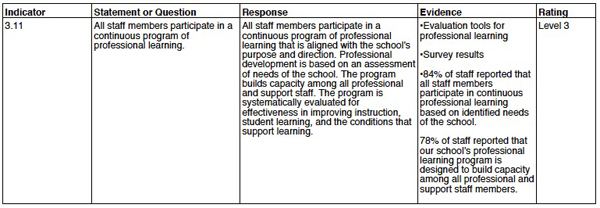 Evidence:
Evidence: Standard 3 Narrative
Standard 3 NarrativePerceptional data produced from stakeholder surveys show that parents, students and staff think in near unanimity that our school is excellent at providing a challenging curriculum to all learners that is equitable to all learners and prepares students well for success at the next level. It is interesting and an area of growth that staff perception of our school using consistent common grading and reporting policies across grade levels and courses based on clearly defined criteria is rated relatively lowly.
We have a guaranteed and thorough process for curriculum review. While this process has effectively sustained challenging curricula that is equitable for all our learners, we are excited by a current transition to a school improvement model based upon a focused analysis of data that produces goals for increased student achievement that have measurable performance targets.
At the same time, our Evaluation System is in a time of transition where school leaders hold all school personnel accountable for and evaluate the overall quality of the implementation of all interventions and strategies. This impetus for this initiative is both through by our assessment of the current evaluation system and new requirements for evaluation by the State.
We define a collaborative learning community. For many years we have used Professional Learning Communities as our model for Professional Development and this year have adjusted to interdisciplinary collaborative groups. Although we value collaboration, we also see equivalent learning expectations among like courses to be an area of growth. This is a reflection of our constant effort to find balance between teacher autonomy that maximizes the skill/effectiveness of our instructors and assured learning experiences for our students.
One of our current school improvement goals is the articulation of a school wide shared instructional model. Our Professional Development this year has targeted this by convening interdisciplinary groups which were self-selected by teachers around Marzano's 41 indicators for teacher effectiveness. All teachers established a goal this year to explore the making of learning objectives obvious to learners and a second indicator to explore, set goals, implement strategies and share in their collaborative groups. We are eager to assess the effectiveness of this approach and expect adjustments will be made moving forward to maximize its potential.
Emphasis on building relationships and knowing students well is also an attribute that defines us. Testimony to this fact is evidenced by recent survey data from the fall of 2014 where 98% of our students said they could identify a teacher with whom they have a strong, positive relationship.


